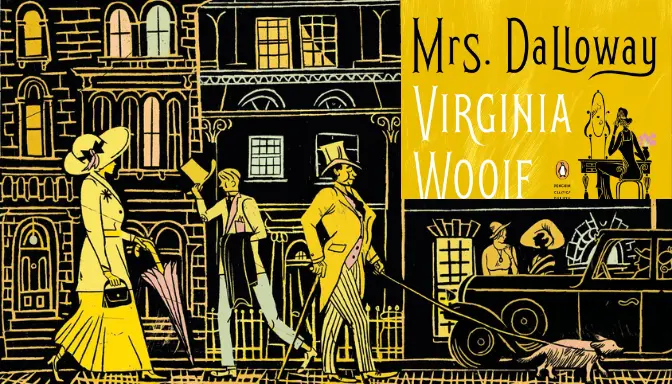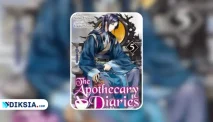Diksia.com - Mrs Dalloway is a novel by Virginia Woolf, published in 1925, that examines one day in the life of Clarissa Dalloway, an upper-class woman in post-World War I London. The novel is considered one of Woolf’s best-known works and a masterpiece of modernist literature.
It employs the technique of stream of consciousness, shifting the focus of the narration among different characters and their inner thoughts. The novel also explores the themes of time, memory, identity, and mortality, as well as the social and psychological effects of the war.
Plot Summary
The novel begins with Clarissa Dalloway preparing to host a party in the evening. She goes out to buy flowers and reflects on her past, especially her choice of marrying the reliable but dull Richard Dalloway instead of the passionate and adventurous Peter Walsh, who visits her unexpectedly that morning. She also remembers her friendship with Sally Seton, a rebellious and feminist woman with whom she had a kiss in her youth.
Meanwhile, Septimus Warren Smith, a war veteran suffering from shell shock, wanders around the city with his wife Lucrezia. He is haunted by hallucinations of his friend Evans, who died in the war, and by the sense of meaninglessness of his life. He is seen by two doctors, Holmes and Bradshaw, who prescribe him rest and confinement in a mental institution. Unable to bear the loss of his freedom and dignity, Septimus commits suicide by jumping out of a window.
The novel ends with Clarissa’s party, which is attended by many of her friends and acquaintances, including Peter Walsh and Sally Seton. Clarissa learns about Septimus’ death from her husband, who was informed by Bradshaw. She feels a connection with the stranger, who she thinks has preserved his integrity by choosing to die. She also reconciles with her past and accepts her present, finding a moment of happiness and peace.
Themes and Analysis
One of the main themes of the novel is the contrast between the external and the internal, the public and the private, the superficial and the profound. The characters are constantly aware of the social expectations and conventions that govern their lives, but they also have their own individual thoughts and feelings that often contradict or conflict with the outward appearance.
For example, Clarissa is a respected and elegant hostess, but she also suffers from a sense of emptiness and isolation. Septimus is a war hero, but he is also a tormented and misunderstood soul. The novel challenges the reader to look beyond the surface and to empathize with the complexity and diversity of human experience.
Another theme is the nature and perception of time. The novel spans one day, but it also covers the past and the future of the characters, as well as the historical and cultural context of the post-war society. The novel uses the device of the clock to mark the passage of time, but it also shows how time is subjective and relative, depending on the mood and the memory of the characters.
For example, Clarissa feels that she has lived a whole lifetime in one morning, while Septimus feels that time has stopped and that he is trapped in an eternal present. The novel also suggests that time is cyclical and that the past and the future are connected by the present. For example, Clarissa’s party is a repetition of the parties she used to have in her youth, and it also foreshadows the parties she will have in her old age.
A third theme is the search for identity and meaning in a changing and chaotic world. The characters are faced with the questions of who they are, what they want, and what they value. They are also influenced by the social and historical forces that shape their lives, such as the war, the class system, the gender roles, and the modern culture. The novel shows how the characters struggle to find their own voice and place in the world, and how they cope with the challenges and opportunities that arise.
For example, Clarissa tries to balance her roles as a wife, a mother, and a hostess, while also expressing her individuality and creativity. Septimus tries to cope with the trauma and the alienation that result from the war, while also seeking a higher truth and beauty. The novel also shows how the characters find meaning and joy in the small and ordinary things, such as flowers, music, and friendship.
Style and Significance
The novel is written in a style that is characteristic of modernist literature, which emerged in the early 20th century as a response to the social and cultural changes brought by the industrialization, urbanization, and globalization. The novel rejects the traditional conventions of plot, structure, and narration, and instead adopts an experimental and innovative approach that reflects the complexity and fragmentation of modern life.
The novel uses the technique of stream of consciousness, which mimics the flow of thoughts and impressions in the characters’ minds, without the intervention of an omniscient narrator. The novel also uses the technique of free indirect discourse, which blends the voice of the narrator and the voice of the characters, creating a sense of intimacy and ambiguity.
The novel also uses the technique of intertextuality, which refers to the use of references and quotations from other texts, such as Shakespeare, Greek mythology, and the Bible. The novel thus creates a rich and layered text that challenges the reader to interpret and appreciate the multiple meanings and perspectives.
The novel is significant for its contribution to the development and recognition of modernist literature, as well as for its influence on later writers and genres. The novel is widely regarded as one of the masterpieces of Woolf, who is considered one of the most important and influential writers of the 20th century.
The novel is also praised for its portrayal of the female experience and consciousness, as well as for its exploration of the themes of feminism, sexuality, and mental health. The novel has inspired many adaptations and reinterpretations, such as the 1997 film starring Vanessa Redgrave, the 1998 novel The Hours by Michael Cunningham, and the 2002 film based on Cunningham’s novel, starring Meryl Streep, Nicole Kidman, and Julianne Moore.
Conclusion
Mrs Dalloway is a novel that offers a vivid and insightful glimpse into the life and mind of a woman and a society in transition. It is a novel that celebrates the beauty and the mystery of human existence, as well as the challenges and the possibilities of modernity.
It is a novel that invites the reader to join the characters in their journey of self-discovery and self-expression, and to share their moments of joy and sorrow, of hope and despair, of love and loss.
It is a novel that remains relevant and inspiring for today’s readers, who can find in it a reflection of their own questions and concerns, as well as a source of inspiration and delight.






